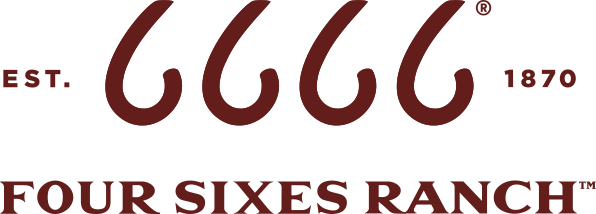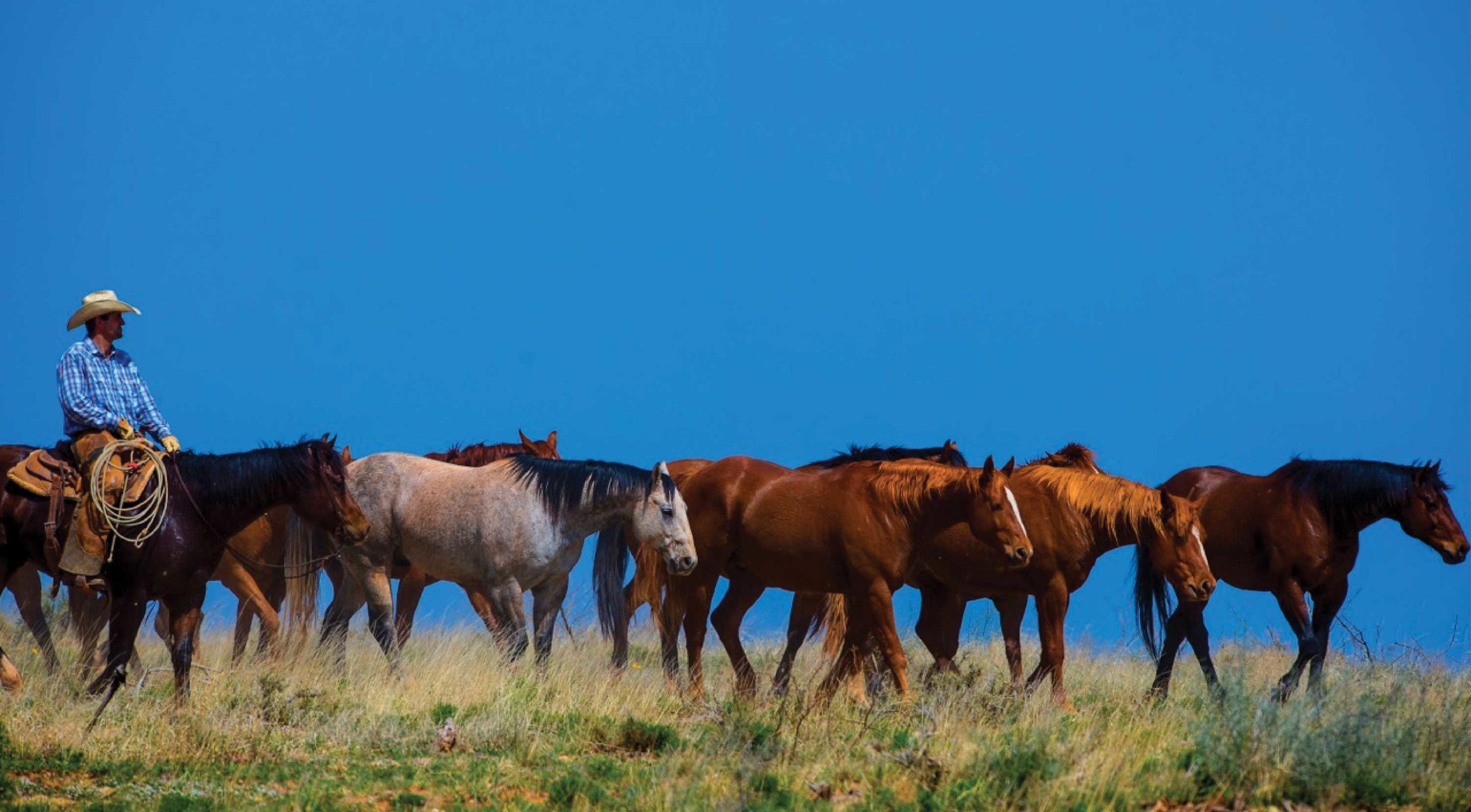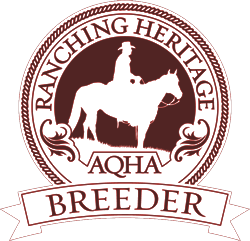Meet the 1993 Best Remuda Winner.
Courtesy of The Quarter Horse Journal
Story by Jim Jennings
Raising Ranch Horses on The Sixes
In two barns not more than a hundred yards behind where Dr. Glenn Blodgett sat, stood three of the highest-priced stallions the Quarter Horse industry has ever known. Collectively, those three stallions’ get have earned more than $55 million on racetracks. To a lot of people, breeding those horses would be the opportunity of a lifetime. Blodgett agrees. It is an opportunity of a lifetime. But it was not those three stallions that brought him to the Four Sixes Ranch. He was there long before they were. “I like to be associated with really good livestock, whether it be horses or even cattle,” he said. “There’s not a better feeling to me than being horseback on an early morning in one of these big pastures.”
That philosophy has been around the Four Sixes Ranch for more than a hundred years, and it continues with a man responsible for breeding three of the best known stallions in the entire Quarter Horse industry. That indicates why the Four Sixes was selected as this year’s winner of the AQHA Best Remuda Award. Given by the American Quarter Horse Association, in conjunction with the National Cattlemen’s Association, the Best Remuda Award honors one ranch each year that is judged to have the best remuda of working ranch horses.
Blodgett, who is the Four Sixes Ranch’s horse manager, said they were very proud to have earned the Best Remuda Award because, “Our goal with our ranch horse program is to produce the world’s best ranch horse. And I think we’re doing that.”
Raising good ranch horses was always a goal with Samuel “Burk” Burnett, legendary founder of the Four Sixes Ranch. He found his calling early, and joined his father in the cattle business in Denton County, Texas, when Burk was only 10 years old.
Stories about young Burk Burnett are as many as are cattle on the ranch today. According to one of the stories, in the 1860s, as a lad of 17, his father sent him on his first trail drive to the markets in Kansas. Two years later, at 19, Burk headed north with another herd of cattle, this time as the trail boss.
According to the story, the maturity he exhibited on the trip was probably a sign of things to come. Somewhere in the Oklahoma Territory, Indians hit the herd one night and drove off all the horses except the night horses the cowboys were riding. Burk moved the herd out the following morning, with half the cowboys walking, and continued north until he was able to purchase more mounts.
Once he reached Kansas, he found the market had bottomed out. Selling his cattle would mean a tremendous loss. He, of course, had no way to communicate with his father, so he decided to over-winter the cattle in Kansas. Arranging for temporary grassland, he grazed the animals all winter and sold them the following year for a profit.
Around 1867, Burk purchased a herd of cattle that carried the 6666 brand, a mark he adopted and made famous worldwide. An often-told story says that Burk won the cattle in a game of poker by laying down a hand with four sixes, thus the brand. It’s a good story, but not true. The brand came with the cattle. How the original owners came up with the 6666 brand remains unknown.
Burk bought his first land near where Wichita Falls, Texas, would later stand, 125 miles northwest of Fort Worth. As the days of the open range ended, he increased his holdings, buying the old 8 Ranch, near Guthrie in north central Texas. That ranch became the nucleus of the Four Sixes Ranch headquartered near Guthrie today, and a later purchase added the Dixon Creek division, located in the Texas Panhandle.
Burk’s son, Tom, joined his father in running the ranch, and later founded his own ranches – the Triangles, located near Paducah and Iowa Park. Tom had one daughter, Anne Burnett Tandy, who, upon the death of her father and grandfather, took control of both the Four Sixes and Triangle ranches. Known throughout the cattle and horse industry as “Miss Anne,” she was very instrumental in the early years of AQHA. As a matter of fact, in 1940 the AQHA founders were her dinner guests the night before the meeting that originated the Association. Miss Anne was posthumously inducted into the American Quarter Horse Hall of Fame in 1990, during the Association’s 50th anniversary celebration.
Miss Anne, too, had one daughter, Anne Windfohr Marion, the current owner of the Four Sixes ranches.
Today the Four Sixes encompasses nearly 350,000 acres, on which run 7,500 to 8,000 mother cows and about 500 bulls. The ranch has definitely stayed up with the 20th century, with its own airstrip and hangar, pipe corrals and steel barns. But things haven’t changed much in the last hundred years as far as the way the livestock is handled. It’s all done by cowboys on cow horses. Some of the cowboys live at the ranch headquarters, at the edge of Guthrie. Others live with their families at the various “camps,” houses placed in remote areas of the ranch. Camp cowboys usually look after the part of the ranch on which they live, while those who live at headquarters keep their horses there, usually turned out in a small pasture or “trap” near the barns. The cowboys who live at the camps keep their horses in pastures near their houses.
“Both the cowboys at the camps and at headquarters keep a couple of horses up in a lot as they are being ridden, and then rotate them with the others,” Blodgett said. “They wrangle or ‘jingle’ horses in each day as they are needed, depending upon what needs to be done. They usually cut out two, or sometimes three so they will have one for a spare. Then that evening they’ll turn those out and get a new group in.
“We find that the horses ride better if they are turned out the majority of the time. We almost never have any sickness like colic or tying up,” he added. When the ranch is working cattle – like in the spring, when all the calves are branded, a job that takes several weeks – the cowboys at the camps bring most of their horses into the headquarters and leave them there until the work is finished. Everyone works out of headquarters during that period, although the camp cowboys do go home to their families each night. The ranch cowboys ride only geldings. “It’s because of the way our horses are handled,” Blodgett said. “Geldings get along better with each other. Any time we go somewhere on the ranch to work, we load six head in a trailer, and they’ve all got to get along.
“When we get cattle in a pen, some of the men have to get off and work from the ground,” he continued, “and they all turn their horses loose in a corral together. If there were some mares in there, they would be squealing and kicking.”
Blodgett explained that each cowboy has in his “string,” six geldings older than three years old. Also each will have a two- and a three-year-old. “Some of them may have more than one two-year-old, and maybe more than one three-year-old, if they’re riding a horse for one of the older guys who doesn’t ride young horses,” he said.
To get enough horses, they breed 90 to 100 broodmares each year. Many go back to stallions for which the ranch is famous, such as Joe Hancock and Hollywood Gold, and some even go back to Army remount horses that were used in the ’30s and ’40s. However, they have all proven their worth. Quality in horses is important to the ranch, and Blodgett says that there are some specific things they are looking for.
“Our horses have to have a lot of stamina,” he said. “Some of these pastures are several thousand acres in size, and the cowboys need a horse they can ride a long way and still have something left. Smooth riding is important. When you think of the time these men spend horseback, most if it in a trot, you’ve got to have a smooth trotting horse. Also, he’s got to be agile, and be able to move well in the pasture.”
He continued, “We calve in the fall, and wean in the hot summer, in July – lots of 100-degree days. We’ve got to have a horse that’s heat-tolerant, and since we still rope and drag all our calves to the fire when we brand, the horse has to have the strength to drag those calves. He’s also got to have the strength to handle a big bull if we have to rope one.
“Our horses have to have cow sense, they’ve got to want to do something with a cow, and they have to be fast enough to catch these cattle, either when we’re trying to turn them, or rope them.
“We also want a horse that has real good hoof quality,” he said. “We would prefer a horse that didn’t have to be shod, but we put shoes on all of them for added protection. About half of our pastures require a horse to be shod.”With a few exceptions, each man shoes his own horses – the ranch furnishes the shoes, the nails and the tools. “A few of the older guys might get one of the young ones to shoe their horses, but we’ve had guys come to work here that had to learn to shoe a horse.”
Of all the foals that are born each year, most of the geldings go into the remuda, while some of the fillies are returned to the broodmare band. The Four Sixes has an agreement to ship 20 yearling fillies to Colorado State University each August to be used in that college’s colt breaking class. The fillies are returned to the ranch in the spring, and are consigned to a ranch horse sale each May.
Five studs primarily make up the stallion battery, as far as the ranch horses go. They include Strait Silver, by Quicksil Command by Power Command, out of a daughter of Bueno Chex; Preferred Pay, by Dash For Cash out of a daughter of Three Bars (TB); Tenino Badger, by Peppy San Badger – “Little Peppy” – and out of a daughter of Doc Bar; San Tip, by Peppy San out of a Poco Tivio mare; and Tanquery Gin, by Doc O’Lena out of Gin Echols, a world champion cutting horse daughter of Ed Echols. Blodgett is high on all the stallions, and feels that each has his place on the ranch. He said that Strait Silver’s oldest foals are just two this year, and, therefore, there is no indication how they will ride. However, 12 of the 20 fillies that went to Colorado State last year were by Strait Silver, and the instructors there thought this group as a whole was by far the best they had ever had.
“Strait Silver was purchased from Bob Loomis, who had him in reining training,” he said. “He had also been roped on some, and he looked like he had some of the stuff we thought would make an ideal ranch horse. He’s got a really good back, and from his shoulder and stifle down, he’s about as structurally correct as one can get.”
He said that although Preferred Pay was purchased in a racing Quarter Horse yearling sale, he was placed in cutting horse training as a two-year-old. Blodgett said the horse was never shown, but that he did make a good solid cutting horse, “the kind you like to use on the ranch. We’ve been using him extensively since about ’85, and we have some nice broodmares and geldings by him.”
Tenino Badger was purchased from the King Ranch while he was in cutting training with Buster Welch. “He won close to a hundred thousand dollars, and is really an athletic horse,” Blodgett said. “He really has the stamina to do what we need to do on the ranch, and he has the athleticism to be a good cow horse.”
San Tip has been on the ranch for 12 years, and was used extensively for years. However, he has not been used as much lately because of the number of younger stallions they have available.
“Tanquery Gin and Shot O Gin are full brothers, and we’ve used them both extensively here on the ranch,” Blodgett said. “We bred ‘Tanquery’ in ’79, ’80, ’81 and ’82, but then we didn’t use him any more until this year. He was purchased by W.S. Morris III of Augusta, Georgia, in the early ’80s, but we leased him last fall for two breeding seasons.
“That horse, in our opinion, produces an ideal ranch horse. We know what they will do. We know how to mate him on our mares, and we’re going to use him extensively while we have him.
“He’s the type of horse people will be talking about, like they talk about Hollywood Gold, Cee Bars, Gray Badger II and Joe Hancock,” Blodgett added. “In the generations ahead, Tanquery Gin is going to have that kind of impact on our horses here at this ranch.”
Last year, for the first time, breedings to all five of these stallions were offered to the public. “We felt like we had a facility that wasn’t being utilized to its fullest extent,” Blodgett said. “We were trying to look at ways to make the horse division more productive.”
All horses on the ranch have been branded since Burk Burnett’s day. Through the brands, each horse can instantly be identified as to its breeding and age. On the left jaw is a one- or two-digit number that indicates the animal’s mare family, and on the left shoulder is an “L” – in honor of Burnett’s father-in-law, Captain M.B. Lloyd. On the left buttock is a single digit indicating the horse’s year of birth, and the right buttock contains a two-digit number indicating his sire.
When the Four Sixes cowboys pick the new horses for their string each year, it works much like the NFL draft. The picking order is based on seniority at the ranch, but a cowboy will occasionally trade one of the horses in his string to another cowboy in order to get a higher pick.
“To a large extent, these guys will get to liking horses out of a certain mare,” Blodgett said. “They seem to get more aligned to a mare than they do to a stud, but, of course, they get on and off these studs, too.
“It’s been real interesting to me to sit back and watch things play out,” he continued. “Sometimes the men really do better not knowing what a colt’s breeding is, if they pick the horses on how they move, how they react. But if you take everything into consideration, look at the breeding and then go out and study these horses and watch them move out in the pasture, watch them react to you, and really study them over a period of time, you can do a pretty good job of picking a good mount for the future.”
The Dixon Creek division, located up in the Panhandle, has a few cows, but runs primarily steer and heifer yearlings. There are no broodmares, and those cowboys, too, get their picks from the colts at the main ranch. Unlike most ranches of this size, Blodgett artificially inseminates all the mares. He was hired by Mrs. Marion in 1982 because, Blodgett says, “she wanted to really develop the horse program, and intensify and modernize the horse production here on the ranch.”
Last fall Mrs. Marion directed Blodgett to take even more of a giant step. In a move that echoed in Quarter racing circles from coast to coast, Blodgett made arrangements to stand three of the top stallions in the industry – Dash For Cash, Special Effort and Streakin Six – giving the ranch what is arguably the most powerful stallion battery in the industry today. This necessitated even more construction, the latest of which is a 375-foot mare motel and a special barn for Dash For Cash.
Dash For Cash and Special Effort are unquestionably the finest horses of their generations. Both are world champions and the sires of many other champions, and as a sire, 21-year-old Dash For Cash has had an impact on the Quarter Horse industry that is unmatched by any other.
Streakin Six was a great racehorse, earning almost a half million dollars. Racing for Miss Anne, he won the Rainbow Futurity and was second in the All American. He, too, is a sire of champions, and he has a distinct tie to the ranch. Streakin Six is by Easy Six out of a daughter of Little Request (TB), and was bred by the Tom L. Burnett Cattle Company. Easy Six was bred by the S.B. Burnett Estate.
Streakin Six will not be relegated strictly to the visiting race mares. Blodgett said he would breed from five to eight ranch mares to him. “He looks a little more like a cowboy’s horse.”
Dave Lane is foreman of the Dixon Creek division, and Mike Gibson holds those duties at the ranch in Guthrie. Mike’s father, J.J. Gibson, held that position for years, and today is general manager over both ranches.Although Mike Gibson’s responsibilities include running the entire ranch, he, too, has a soft spot for the horses. He grew up on the “Sixes,” and started helping his dad work cattle as soon as he was big enough to get horseback. Today he doesn’t get to ride as much as he would like, due to his job – he relies on a suburban to see as much of the ranch as possible every day, checking on pasture condition, water, etc. – but he’s still very aware of how the horses are handled.
He explained that everyone starts their own two-year-olds in the round pen, plus there will be some extras that the younger men will pick up. Famed horseman Ray Hunt comes to the ranch each year to help the men start their young horses.
“I’ve been here long enough to see a definite change in the remuda,” Gibson said. “We started using a Ray Hunt way of things about 1985. The remuda has nearly turned over now, and it’s a whole different remuda. The general disposition and attitude toward people is a lot better. If something goes wrong, say, someone drops their rope, or a horse gets over a rope, or a saddle turns a little bit, it doesn’t seem to bother them as much. Those old horses, where we tied a foot up, sacked them out, and got on and rode off, any little thing that went wrong, they threw a fit. It’s not that way anymore.
“Of course,” he added, “some still will, and all of them will to a degree, but not near like it was.”
There have been some changes on the Four Sixes Ranch in the last hundred years, but Burk Burnett would still recognize it. Burnett’s home that he built in 1917 for $100,000 still sits atop the hill overlooking the town of Guthrie and the headquarters of the ranch; the ranch is still in the family, owned by Burnett’s great-granddaughter; the brands remain the same, both on the cattle and the horses; and the philosophy about good cow horses is still there.
Perhaps Blodgett says it best: “Something I’m always doing is rethinking how I did something, and trying to figure out how to do it better. I’m always trying to figure out a better way to do things. However, sometimes I may change and go back to the way I was doing it before. The old way might have been better.”












